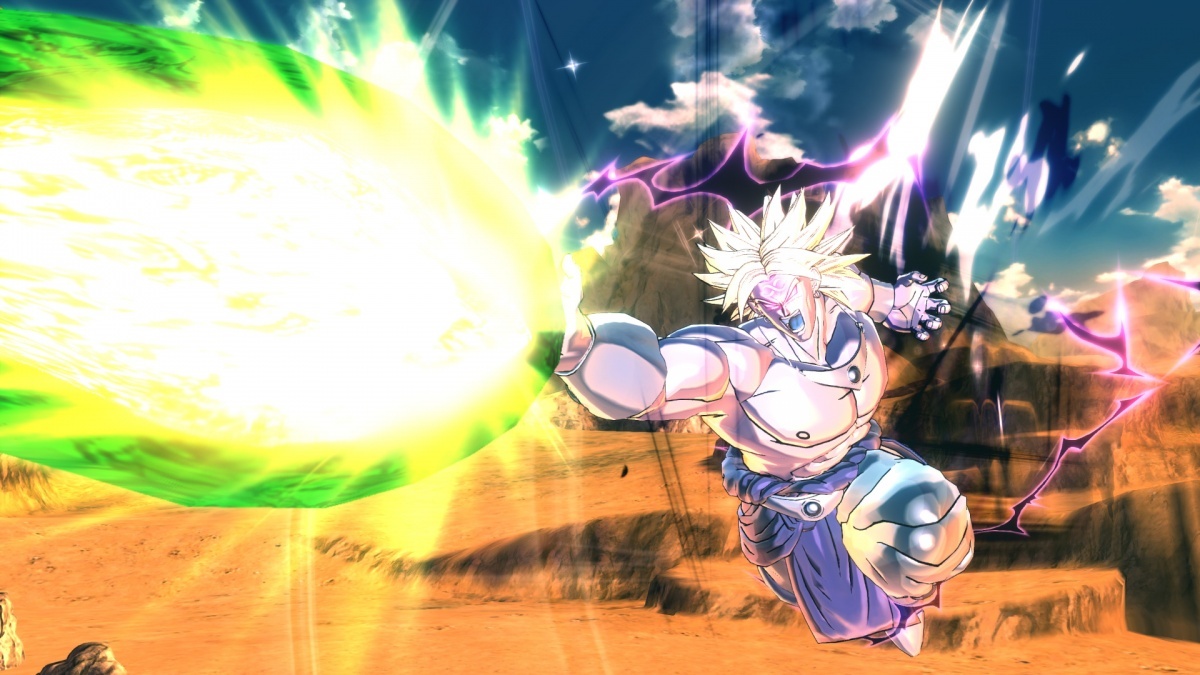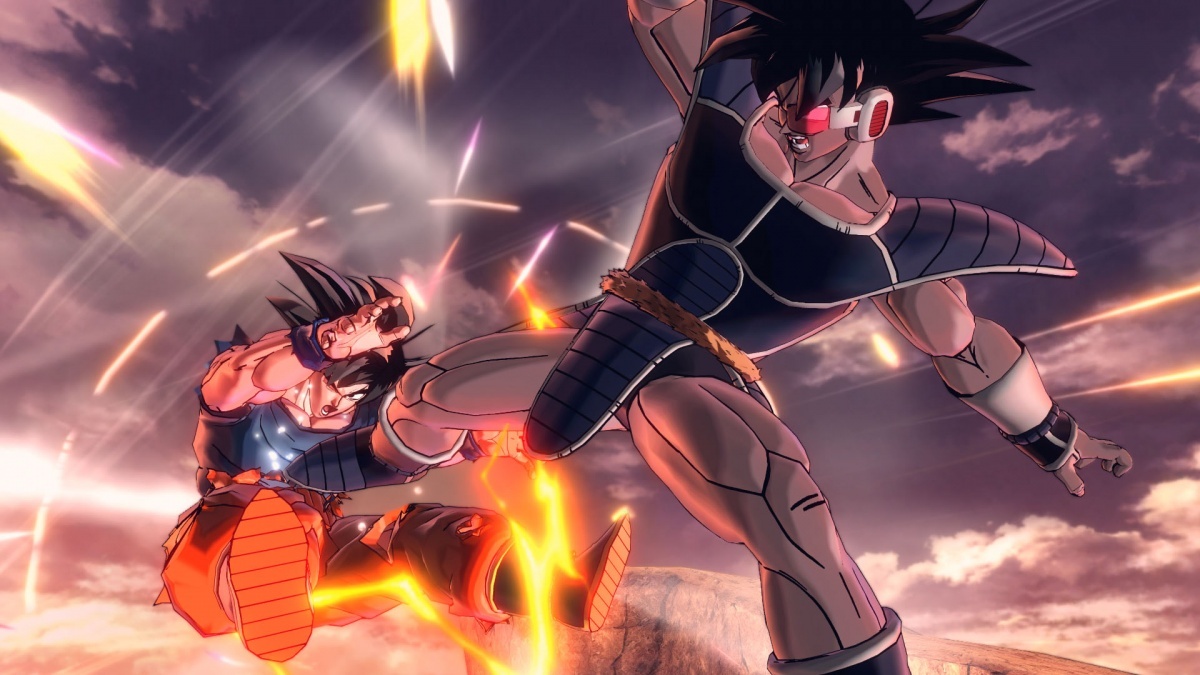Dragon Ball: Xenoverse 2 (Nintendo Switch) Review
By Shane Jury  26.09.2017
26.09.2017

As one of the most influential and popular Japanese manga/animes for many years, the Dragon Ball franchise, in particular the Z series, needs little introduction. Taking place over the lifespan of the central protagonist Goku, the series tells the tales of his many battles across Earth, Space and even Time itself, and introduces a huge cast of colourful and memorable characters. With the huge success of this series, naturally came many videogame adaptations and spin-offs; many of which choosing to focus on the fighting element of Dragon Ball with an occasional RPG or tactical game thrown in for good measure. Dragon Ball: Xenoverse , in particular, was an attempt to portray key battles across the entirety of Z but with a player-influenced twist, and now its sequel is set to do more of the same. Coming nearly a year after its console counterparts, how does Dragon Ball: Xenoverse 2 transition onto Nintendo Switch?
Like the first game, Dragon Ball: Xenoverse 2 puts players into the role of their own created character as a member of the Time Patrol, an elite group that fights to correct the errors of Dragon Ball Z history. Choosing from male and female in one of five races, and utilising some very flexible customisational tools, a custom character can explore the vast hub world of Conton City, undertake story or specially-made missions, and spar with the greatest of Dragon Ball characters.
Taking place many years after the events of Dragon Ball: Xenoverse, the Time Patrol has greatly expanded, and as the newest qualified recruit, the custom character is given the opportunity to right the corrupted events of Dragon Ball lore. How this corruption occurs and the events that are changed are large elements of the story, and are an absolute treat for fans of the franchise - seeing a tag team of Great Ape Nappa and Vegeta against Goku in the Saiyan saga, or Captain Ginyu swapping bodies with Vegeta on Planet Namek, to name but two examples. The developers have clearly had a lot of fun with altering key events in the most unexpected of ways, and it truly pays off for the story missions.
The battles in Dragon Ball: Xenoverse 2 take place in a 3D full-movement space. Making use of series tropes such as Ki-based techniques, flying and transformations, an overall health meter, coupled with Ki and stamina meters, lend a strategic element as to when certain moves can be utilised effectively. Too many evasion movements and a drained stamina meter will leave a fighter wide open to attack, for example. On the flip side, firing too many Kamehameha beams or a powerful Makankosappo blast in succession will deplete the Ki meter and relegate moves back to basic combos. Both meters recharge, but making effective use of them is the key.

The custom character is fully equippable with any techniques learned up to that point, and these can be gained in many ways: purchasable at the shops, taught from certain Dragon Ball characters in the hub world, or even as rewards from finishing missions. This degree of flexibility ensures that even if a custom creation's basic attack combos remain the same for the entirety of the game, there is always a new feel to battle with even just one technique alteration.
For the Switch version of Dragon Ball: Xenoverse 2, limitations have been put on the fluidity of battles - specifically those with three or more fighters on-screen, which is now set at 30 frames per second instead of the solid 60 of the other versions of the game. On paper, this is unfortunate but, in practice, it is very easy to adapt to, and maintains a consistent rock solid performance in even the heaviest of fights, whether docked or undocked. For 1 vs. 1 battles, the game is back to a 60fps output for both modes of Switch play, and solidly so.
From winning battles successfully, the custom character can gain experience points needed to level up and distribute gained stat points. This system is greatly improved in the sequel, making it considerably easier to obtain a top rank for a mission and, thus a higher yield of Exp, plus the vast range of battle opportunities outside of the main story quest ensures quick levelling. Dragon Ball: Xenoverse 2 lamentably still retains the stars difficulty rank for each mission overview, which does give an idea of the resistance expected from enemy fighters, but not the ideal level to be at in order to fight them, leading to a hope-for-the-best scenario in many cases.

Battles in general consist of simply beating up the enemy, singular or multiple, and although varied in number and location at times, this is usually the case for all missions. A number of them do change the rules somewhat, protecting one character from being swarmed, or finding the Dragon Balls scattered across the map, for instance. These alternative objectives popping up from time to time help the game to avoid becoming too repetitive.
Conton City, or the newly renamed Toki Toki City of the original game, is where players will spend a lot of their time outside of fighting. A very large and detailed area, Conton City houses a wide range of stores selling items costumes and skills, story-related spaces, and even key locations from Dragon Ball lore accessible via special portals. Restricted to ground-based exploration at first, a flying licence is given later in the game that opens up even more of the hub world, and quick travel options with well placed robot helpers ensures that players can always find where they need to go.
Sadly, the frame-rate of Conton City suffers at times, far more so when in portable mode, and additionally when choosing a Multi Lobby to roam the hub world with other online players. Priority of frame-rate stability was likely given to the battles and that was definitely the right choice overall, but exploring Conton at times can be quite jarring.
Visually the city is very well designed, containing areas that take after the themes of famous Dragon Ball locations, like the blue fields of Planet Namek or the intertwining stalks of the Bamboo forests, all presented in a cel-shaded-like colourful style. Each important character is given extensive and well done voice acting in cut-scenes and during battle, although at times the sound mixing between voice and music is tipped too far in favour of one over the other. Battle themes are energetic and complementary, but the hub world music is much less so. Changing over the course of the story, the themes can range from obtuse and strange to outright annoyance; an issue that can thankfully be averted by the options menu selection.

The basis of Switch as the platform for Dragon Ball: Xenoverse 2 brings certain advantages, though; motion controls, in particular. Luckily not the arm-flailing punch-a-ton that many would have envisioned in the Wii days of motion control, the game instead restricts this input to only special techniques. By holding down the triggers a player can, for example, pull their arms back and then thrust them forward to perform a Kamehameha or Gatling Gun beam attack. Each technique is in two parts and given a picture explanation in the corner on-screen when ready to use the move. Although each one is very flexible in the range of movement needed to activate them, the timing and poses used ensures little chance of an unintentional move triggering, and motion controls as a whole are entirely optional; quite a bit of fun to mess around with but never essential to enjoy the game in its entirety.
Another useful addition to the Switch version of Dragon Ball: Xenoverse 2 is the split Joy-Con setup for two-player fights. Controls are slightly limited due to the lesser number of buttons but the game is still very playable this way, and a great means of a quick battle with a friend.
The other big extra that only this version of the game holds is the recap of the first game's entire story events. Not actually in the base game but available as a 2GB download, the Dragon Ball: Xenoverse content puts the custom character into the role of the first Time Patroller and allows them to witness the first game's changes to Dragon Ball history. This is a significant extra and a huge boon to overall playability of Dragon Ball: Xenoverse 2, marred slightly by its limited-time freebee availability, although interested parties can still download it even without a copy of the game to hand.
Outside of the fairly average number of story missions, Dragon Ball: Xenoverse 2 is a massive game overall. Key locations from Dragon Ball lore to defend and run tasks for, hundreds of techniques to find and learn, a huge number of what-if parallel missions to try out, online functionality that works great for battles even with a weak connection, offline multiplayer that retains the same solid performance in fights as in single player, and, of course, the addition of the story events from the first release. That's not even including the downloadable content options that, whilst understandably jarring for having to be a separate purchase for a year later, full price port, add significant content onto what is already a massive game. As a first foray onto the Nintendo Switch for Akira Toriyama's star franchise, Dragon Ball: Xenoverse 2 stumbles in performance and presentation but ultimately wins the beam struggle with the hardware limitations.

Cubed3 Rating
Great - Silver Award

Arriving nearly a year later, but losing none of the charm and gaining some new tricks, Dragon Ball: Xenoverse 2 is ultimately a very solid version of the game on Switch, performance downgrades aside. An enjoyable and versatile battle system, coupled with a plethora of content that fans will appreciate, and an engaging story both new and old makes for a viable purchase option for both arena fighter and franchise devotees alike.

![]() 6/10
6/10
![]() 0
(0 Votes)
0
(0 Votes)
 Out now
Out now  Out now
Out now  Out now
Out now  Out now
Out now Comments
Comments are currently disabled

 Sign In
Sign In Game Details
Game Details Subscribe to this topic
Subscribe to this topic Features
Features





 Top
Top

